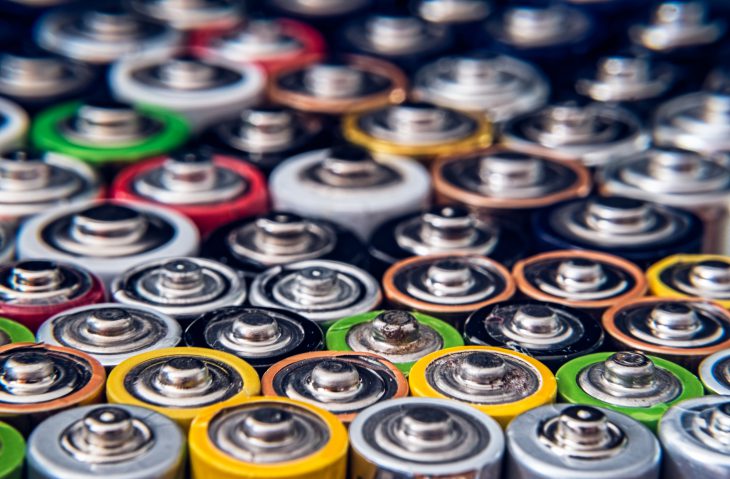Rechargeable lithium ion batteries are used to power many electronics in our everyday lives, from laptops and cellphones to electric cars. The lithium ion batteries on the market today typically rely on a liquid solution, called an electrolyte, at the center of the cell.
When the battery is powering a device, lithium ions move from the negatively charged end, or anode, through the liquid electrolyte, to the positively charged end, or cathode. When the battery is being recharged, the ions flow the other direction from the cathode, through the electrolyte, to the anode.
Lithium ion batteries that rely on liquid electrolytes have a major safety issue: they can catch on fire when overcharged or short circuited. A safer alternative to liquid electrolytes is to build a battery that uses a solid electrolyte to carry lithium ions between the anode and cathode.
However, previous studies have found that a solid electrolyte led to small metallic growths, called dendrites, that would build up on the anode while the battery was charging. These dendrites short circuit the batteries at low currents, making them unusable.
Dendrite growth begins at small flaws in the electrolyte at the boundary between electrolyte and anode. Scientists in India have recently discovered a way to slow dendrite growth. By adding a thin metallic layer between electrolyte and anode, they can stop dendrites from growing into the anode.
The scientists chose to study aluminum and tungsten as possible metals to build this thin metallic layer. This is because neither aluminum nor tungsten mix, or alloy, with lithium. The scientists believed this would lower the likelihood of flaws forming in the lithium. If the metal chosen did alloy with lithium, small amounts of lithium could move into the metal layer over time. This would leave a type of flaw called a void in the lithium where a dendrite could then form.
In order to test the effectiveness of the metallic layer, three types of batteries were assembled: one with a thin layer of aluminum between lithium anode and the solid electrolyte, one with a thin layer of tungsten, and one with no metallic layer.
Before testing the batteries, the scientists used a high powered microscope, called a scanning electron microscope, to look closely at the boundary between anode and electrolyte. They saw small gaps and holes in the sample with no metallic layer, noting that these flaws are likely places for dendrites to grow. Both the batteries with aluminum and tungsten layers looked smooth and continuous.
In the first experiment, a constant electric current was cycled through each battery for 24 hours. The battery with no metallic layer short circuited and failed within the first 9 hours, likely due to dendrite growth. Neither battery with aluminum or tungsten failed in this initial experiment.
In order to determine which metal layer was better at stopping dendrite growth, another experiment was performed on just the aluminum and tungsten layer samples. In this experiment, the batteries were cycled through increasing current densities, starting at the current used in the previous experiment and increasing by a small amount at each step.
The current density at which the battery short circuited was believed to be the critical current density for dendrite growth. The battery with an aluminum layer failed at three times the starting current, and the battery with a tungsten layer failed at over five times the starting current. This experiment shows that tungsten outperformed aluminum.
Again, the scientists used a scanning electron microscope to inspect the boundary between anode and electrolyte. They saw that voids started to form in the metal layer at two thirds of the critical current densities measured in the previous experiment. However, voids were not present at one third of the critical current density. This confirmed that void formation does proceed dendrite growth.
The scientists then ran computational calculations to understand how lithium interacts with these metals, using what we know about how tungsten and aluminum respond to energy and temperature changes. They demonstrated that aluminum layers do indeed have a higher likelihood for development of voids when interacting with lithium. Using these calculations would make it easier to choose another type of metal to test in the future.
This study has shown that solid electrolyte batteries are more reliable when a thin metallic layer is added between electrolyte and anode. The scientists also demonstrated that choosing one metal over another, in this case tungsten instead of aluminum, could make batteries last even longer. Improving the performance of these types of batteries will bring them one step closer to replacing the highly flammable liquid electrolyte batteries on the market today.


